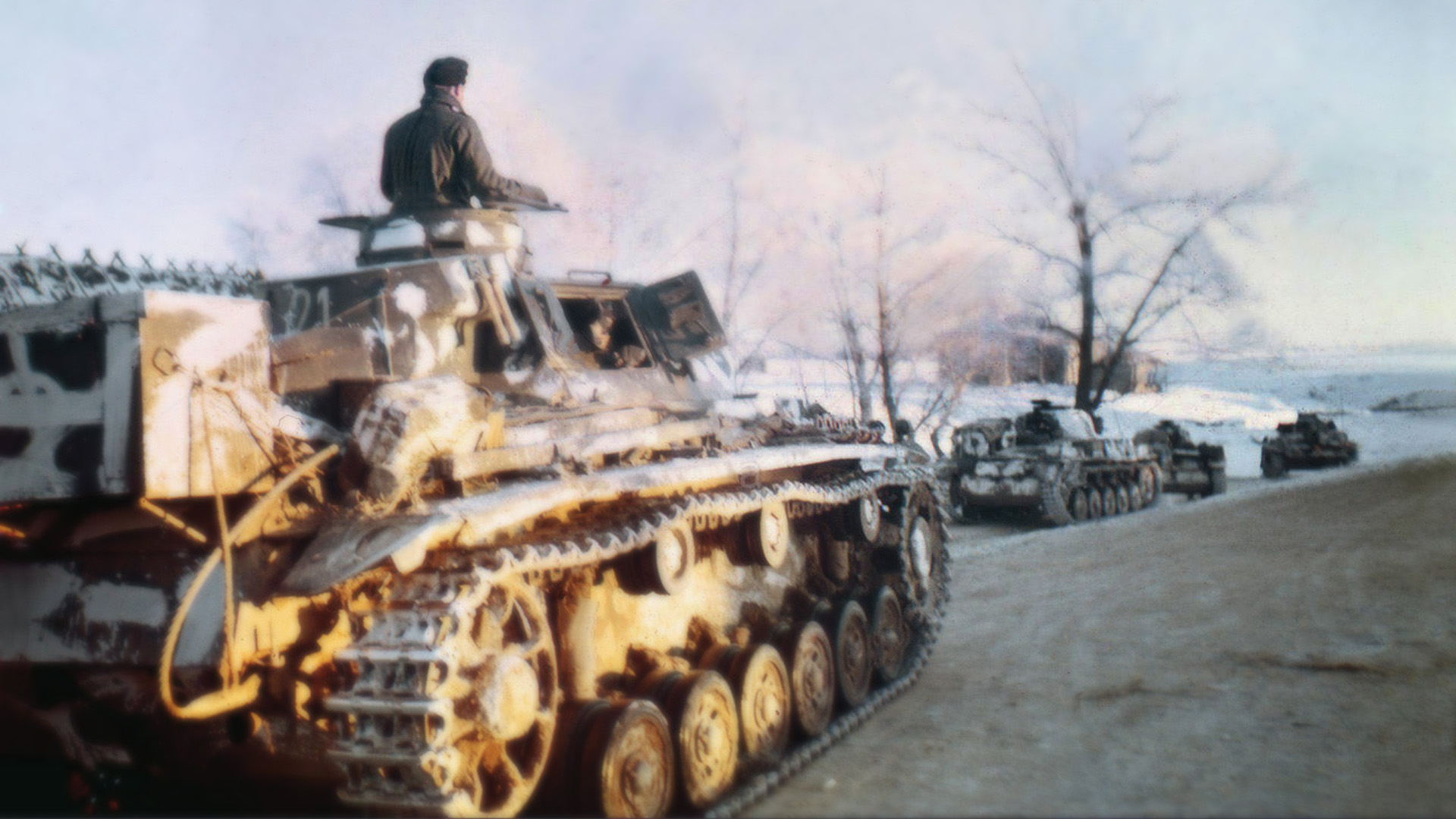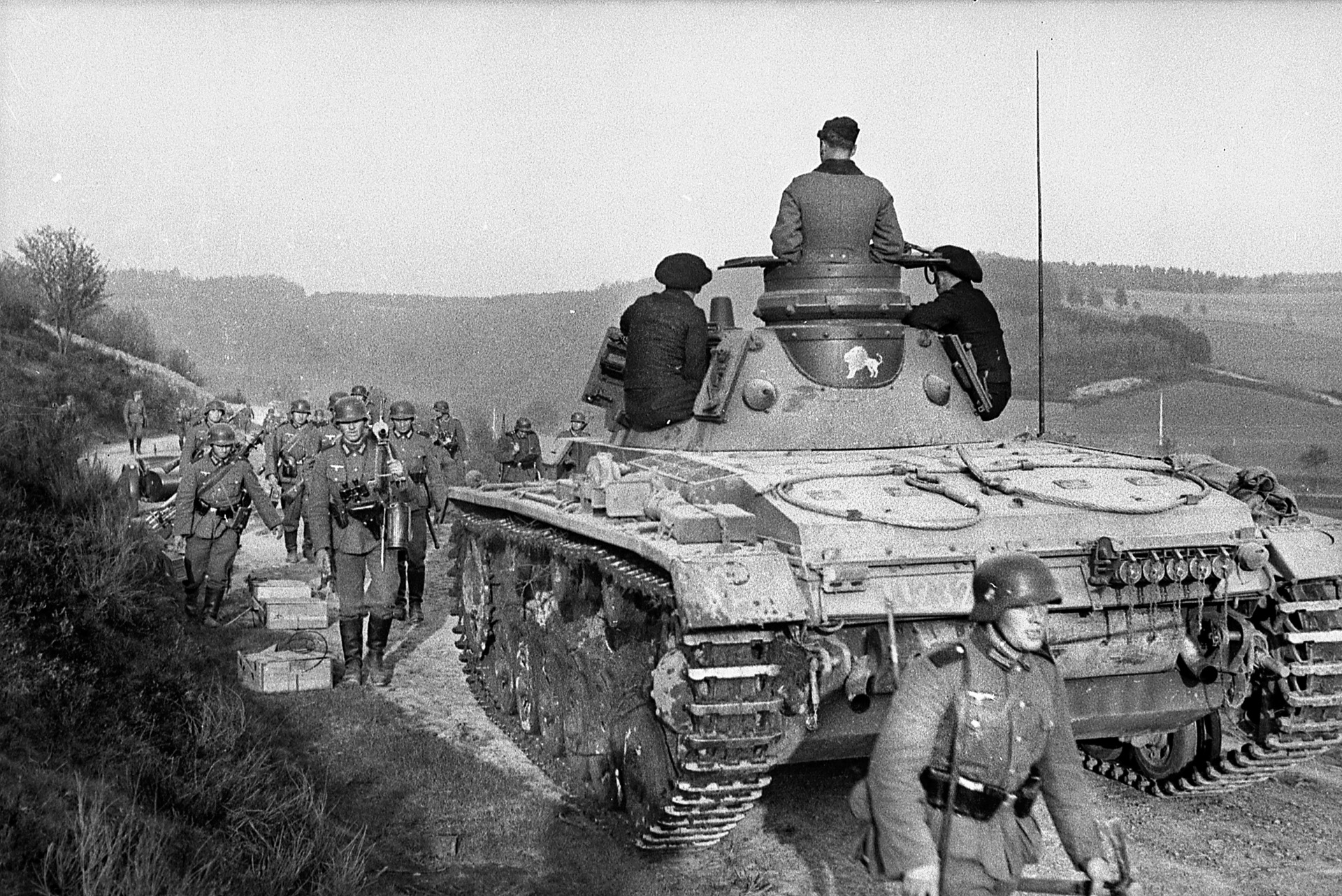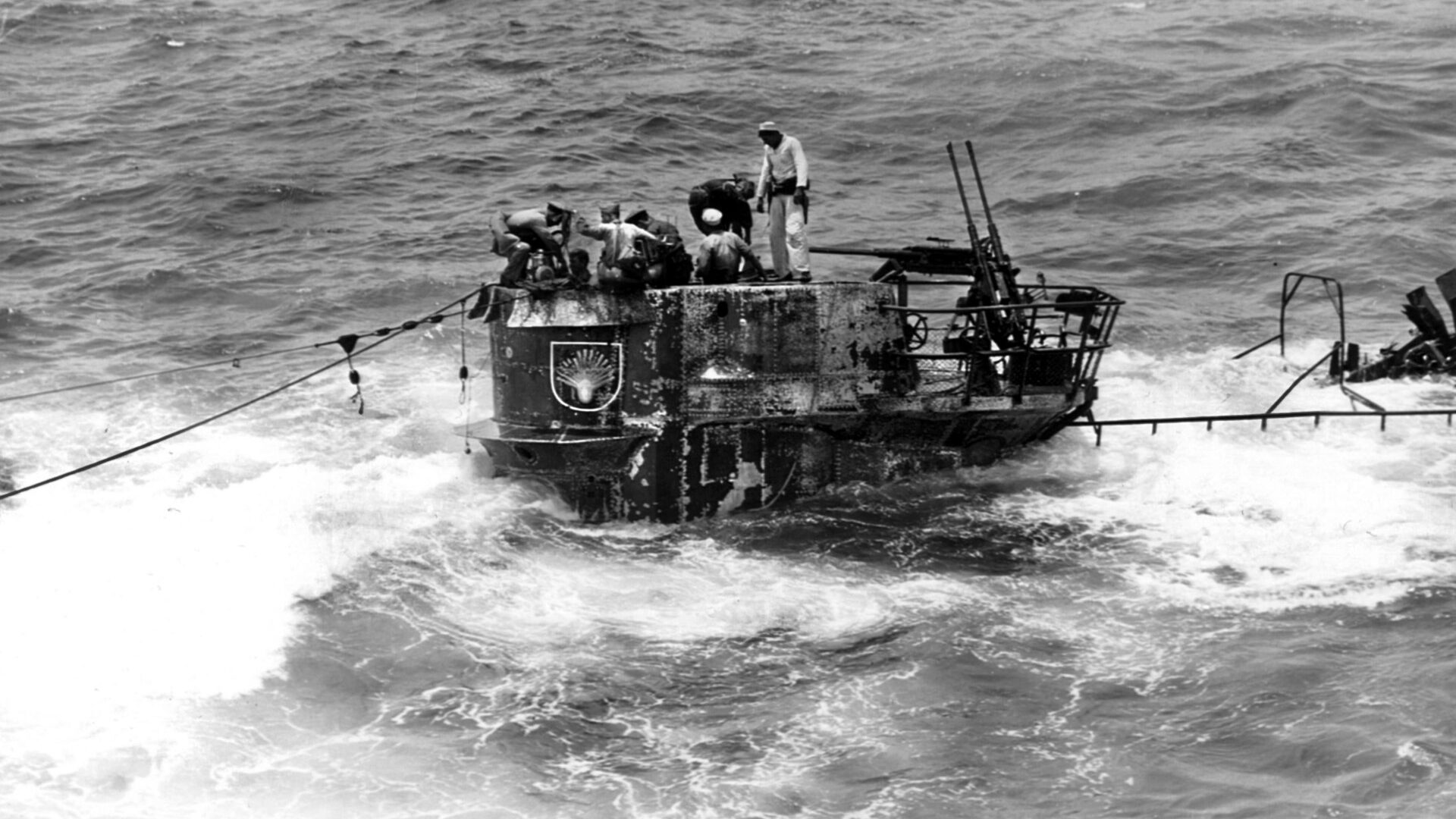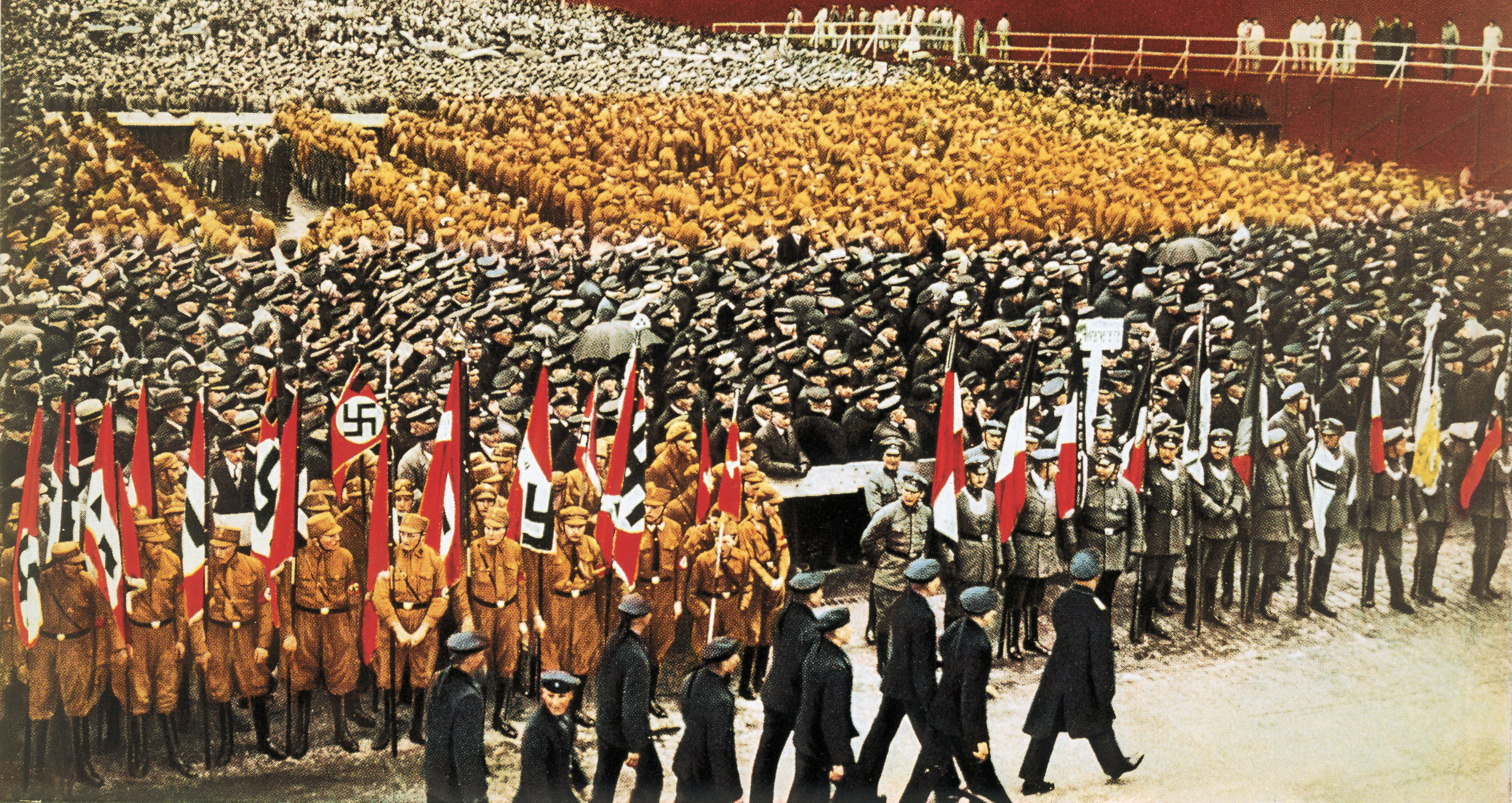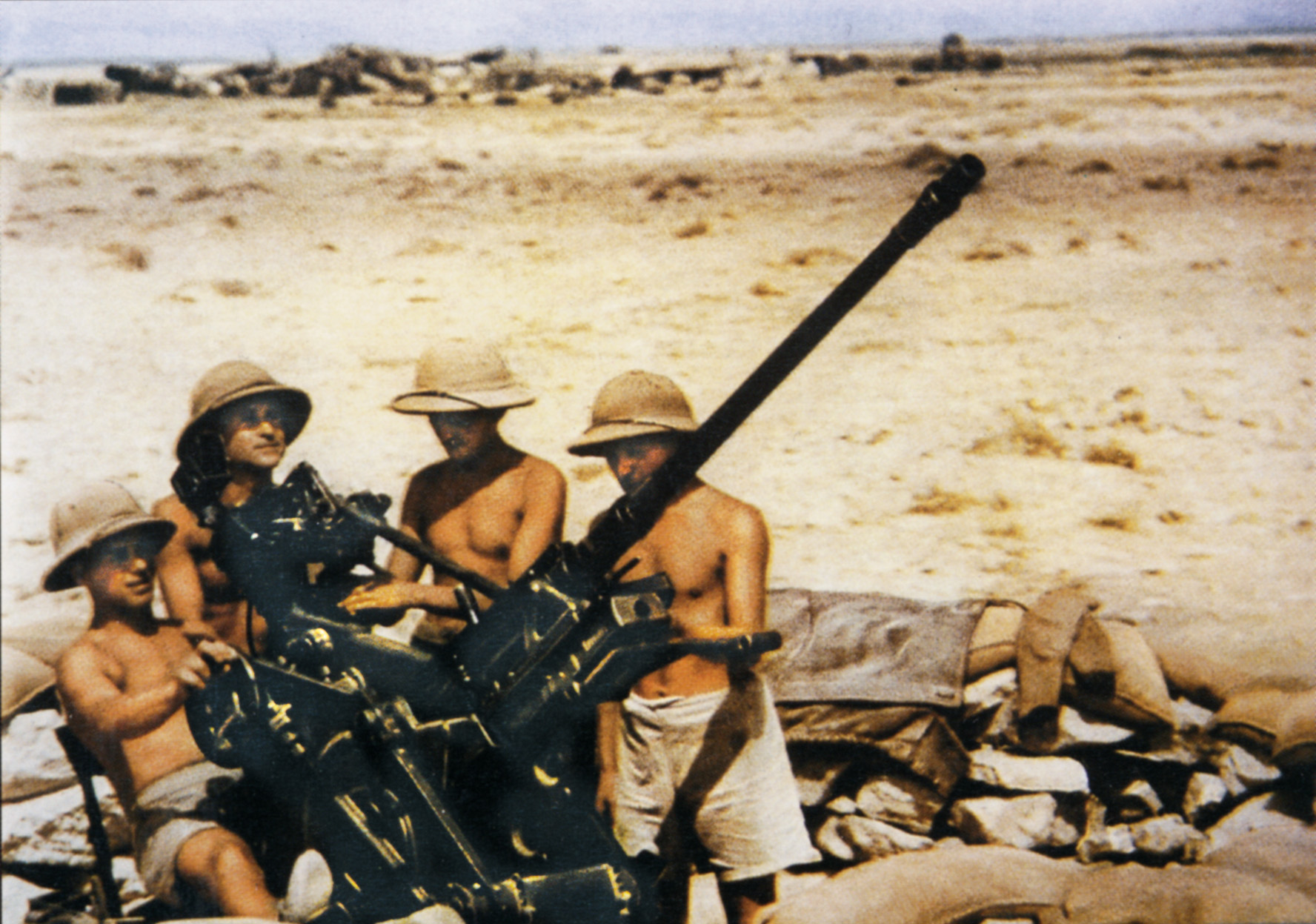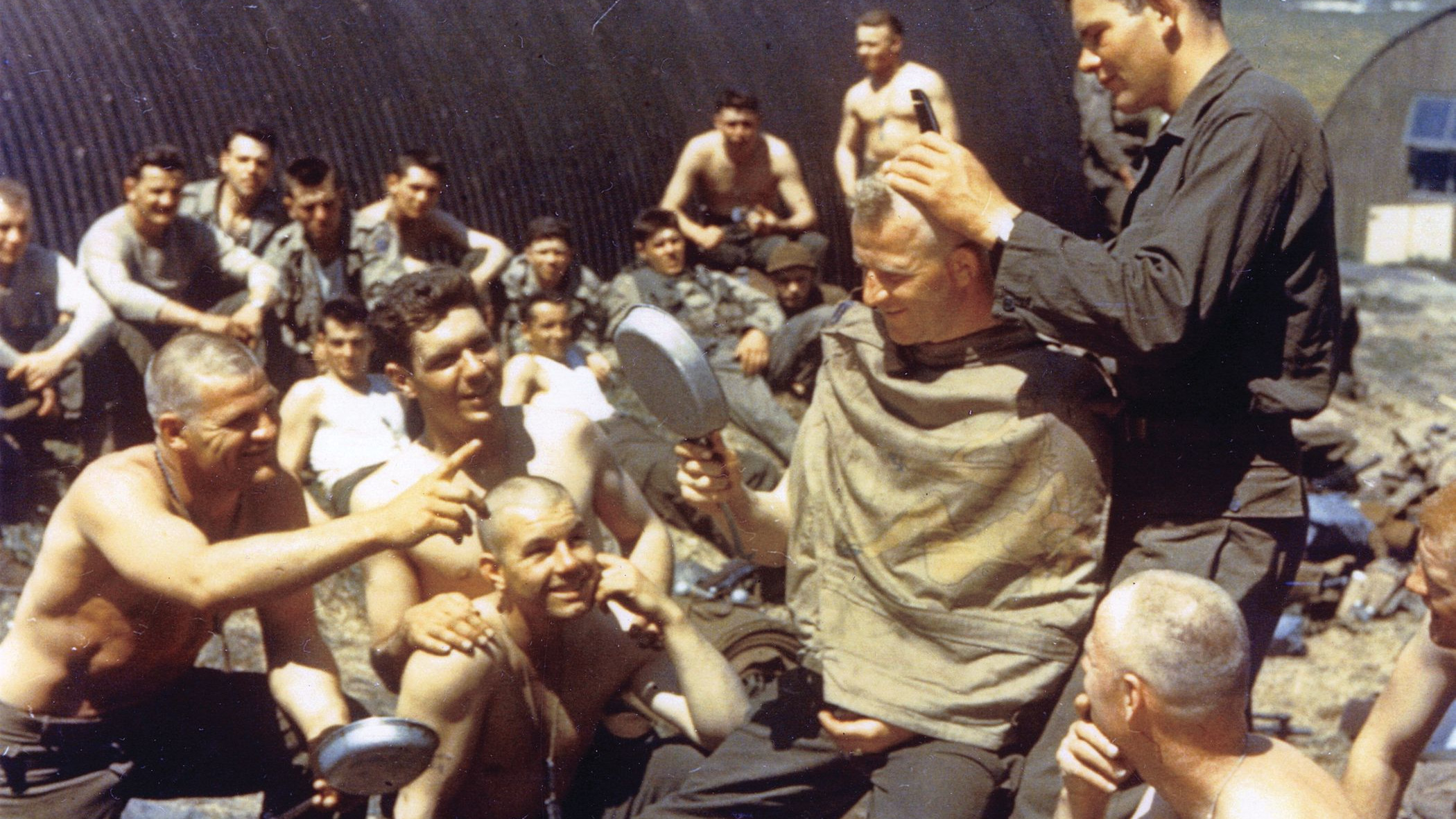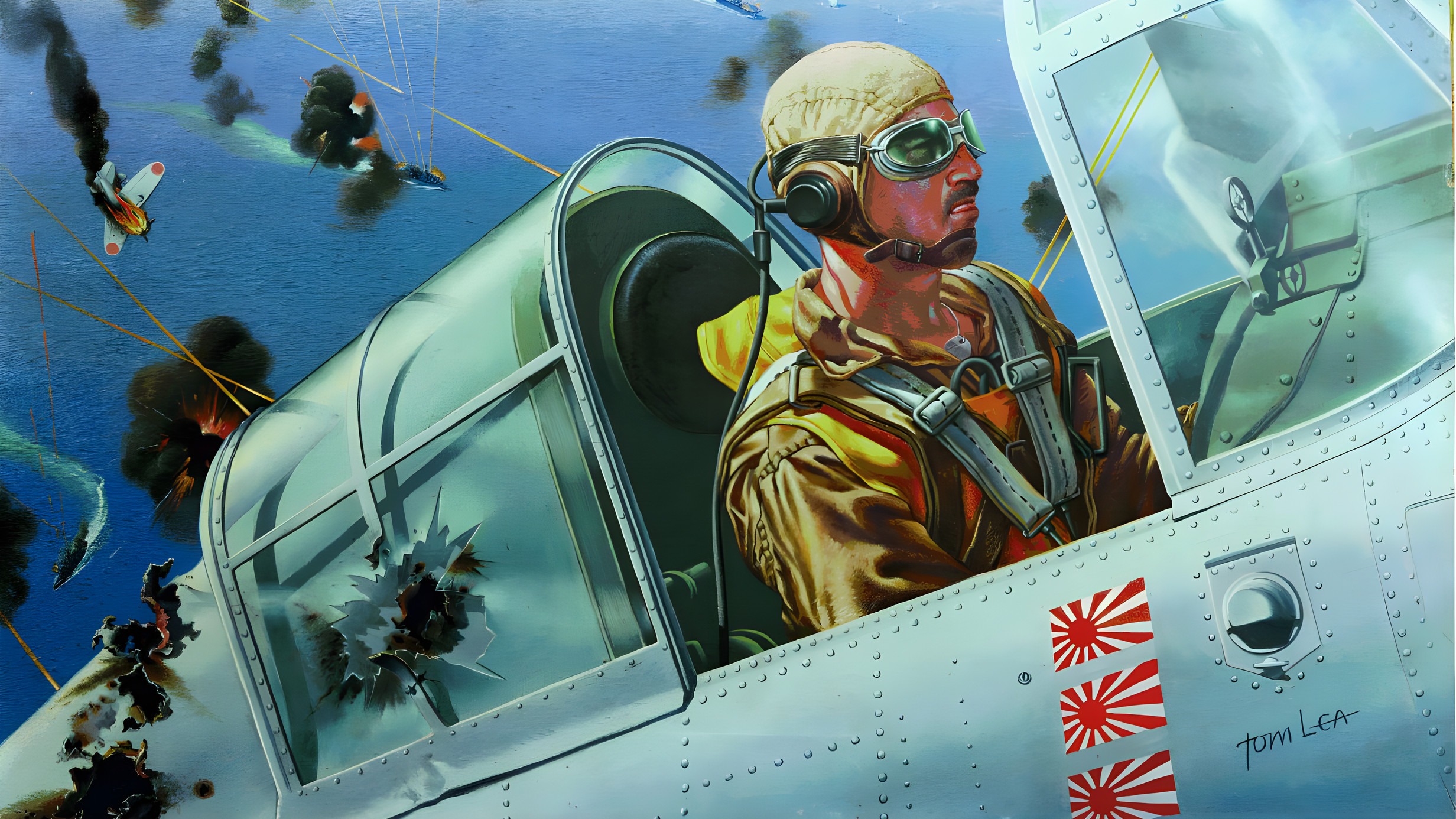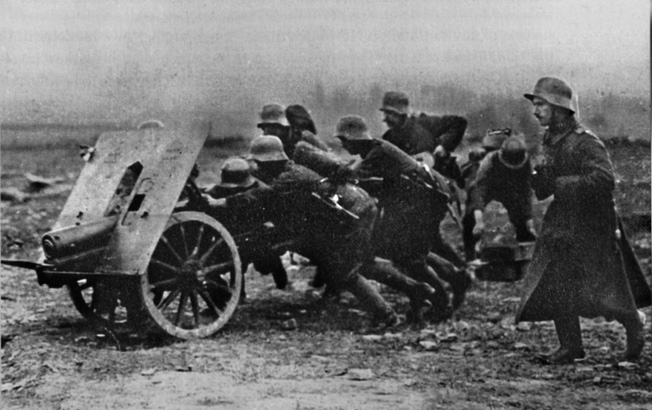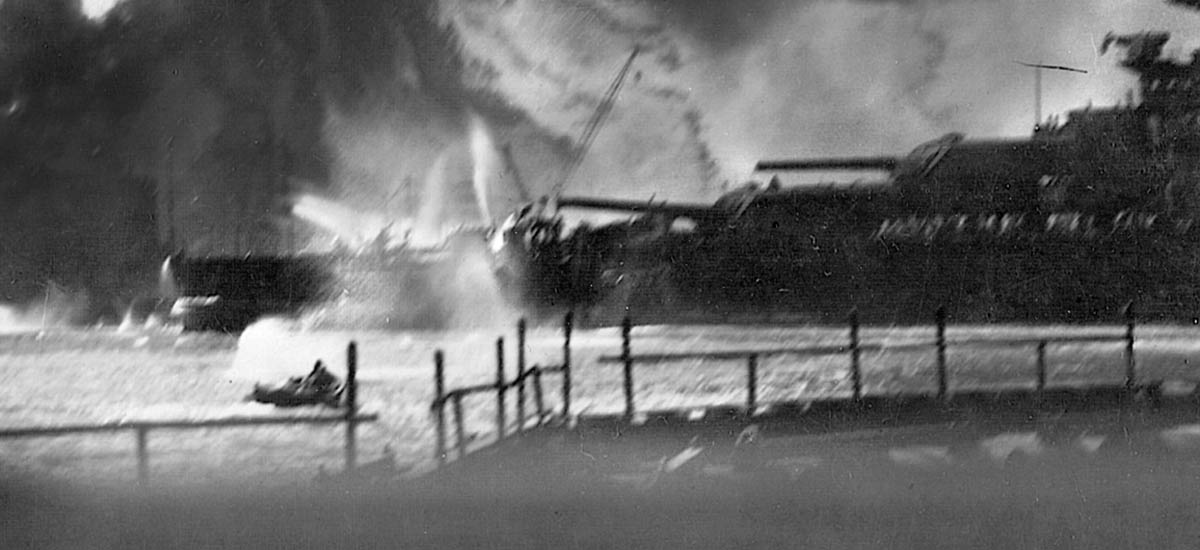By Allyn Vannoy
Russian deception, misdirection, and misinformation, as evidenced in ecent years, can be very destructive. But it’s nothing new—it’s the result of hard-earned experience during World War II.
The German surprise attack on the Soviet Union in June 1941 stunned the Red Army and the Russian leadership. As the Russians recovered and rebuilt, they recognized the need to develop the ability to deceive their enemy—a process that would take years and cost countless lives to achieve.
Early in the war Russian misdirection efforts were largely ineffective. Their main weaknesses were that they suffered from an inability to master radio-communications discipline and communications security, as well as to successfully maintain operational planning security. These poorly developed skills were to persist into the mid-war years.
The initial German offensive had nearly crushed the Russian forces, undermined the confidence of Red Army commanders, and tested their doctrine, bringing to the surface its faults and failures. In the first 18 months of the war, the Russians suffered disastrous defeats and near-catastrophic losses as they sought to halt the Germans. The fighting laid bare the true state of the Red Army. It was a large, cumbersome force led by a command made up of survivors from years of purges. While some of the senior commanders might have been competent, a handful even brilliant, many shared a profound inability to innovate or to think creatively. The German offensive had also caught the Red Army in the midst of both reorganization and a major reequipment program.
The first major Russian attempt to employ large-scale deception—in this case to cover preparations for offensive operations—took place before Moscow in November–December 1941. The Russians were assisted in part by the German High Command, as it maintained an overly optimistic outlook and underestimated the Russians’ ability to raise and deploy fresh reserves. At the end of November, elements of three new Russian armies had been deployed before Moscow in preparation for a counteroffensive.
The measures associated with the winter counteroffensive were neither systematically planned nor part of a well-organized strategic effort of deception and misdirection. The surprise achieved at Moscow occurred more as a result of combat conditions rather than a conscious effort to implement a regrouping under the guise of strategic deception. Yet, the Russians demonstrated the ability to hide large troop deployments. Because of this, as well as poor German intelligence, the counteroffensive came as a complete surprise to the German High Command and Army Group Center.
During movement to assembly areas, Russian troops were required to observe strict light and camouflage discipline, and all movement occurred at night under absolute radio silence. The Russians also made every effort to camouflage supply dumps, rail lines, and roads used for deployment.
In early 1942, initiative returned to the Germans as they succeeded in deceiving the Russians regarding their strategic intentions, with near-disastrous consequences for the Russians along the southern front. By mid-1942, however, the Russians began to engage in their own deception and misdirection associated with their plans to conduct a strategic counterstroke against increasingly overextended Axis armies. Russian actions along the northern and center portions of the front during the summer and early fall served to distract German attention as they secretly transferred forces to the south.
The first Russian offensive to use deception operations occurred during the attack on the Rzhev-Vyazma salient west of Moscow in July and August 1942. General Georgy Zhukov, commander of the Western Front, decided to simulate a concentration of forces near Yukhnov. He created two deception-operation staffs and small deception units, deploying dummy tanks, guns, vehicles, field kitchens and fuel tanks. They simulated the unloading of troops from a railhead and the concentration of armor and motorized infantry as if preparing to attack Yukhnov. Radio communications created false traffic between the simulated armies and Front headquarters.
The deception had the effect of increasing Luftwaffe air strikes against railheads and false troops concentrations. The Wehrmacht also moved three panzer divisions and one motorized division to the Yukhnov area. Meanwhile, the real troop concentrations were conducted at night and in thick forests. Achieving some surprise, Zhukov’s attack began on August 4, advancing 25 miles in two days.
In the fall of 1942, the Soviet High Command (Stavka) gathered its forces to launch a decisive attack against Army Group South along the Don and Volga rivers near Stalingrad. They drew on their experience from the previous 18 months to mask preparations and misdirect the Germans concerning the location of their coming offensive.
In a systematic undertaking, the Russians conducted a detailed examination of their experiences from the previous year. They created a mechanism to collect, process, and analyze information. The results focused on the need for concealment of regroupings and the concentrating of forces for offensive operations. Findings recommended that artillery preparations be masked by moving batteries by night into firing positions, registering a limited number of guns over a two-day period, conducting firing from temporary positions, and camouflaging outposts and artillery emplacements. It was also determined that it was best to launch an assault during darkness or during a snowstorm.
Commanders and their staffs tightened planning security through the strict use of small planning groups. They sought to hide the direction of a main attack by deception and choosing unlikely places to attack. They began to appreciate the benefits of concealing the timing of an attack even when unable to conceal their intent. But communications discipline was still poorly executed, and German air reconnaissance still provided important information about Russian operations.
By late 1942, the Russians had come to realize that deception and misdirection, applied at all levels of operations, were interdependent.
Secrecy was critical in hiding preparations for Operation Uranus—the cutting off and surrounding of German forces in Stalingrad. The November 1942 Russian counterattack at Stalingrad was the first instance of large-scale deception.
Proof of the success of the deception came when the chief of the German General Staff, General Kurt Zeitzler, claimed in early November, “The Russians no longer have any reserves worth mentioning and are not capable of launching a large-scale attack.” Several small diversionary attacks were conducted to the north of Stalingrad to give the impression that Russia was unable to launch any substantial assault.
Strategic deception included increasing military activity before Moscow. In the area of planned attacks, elaborate disinformation was fed to the Germans. Defensive lines were built to deceive German reconnaissance. Civilians within 16 miles of the front were evacuated. Along the Voronezh Front, bridging equipment and boats were prepared to suggest an offensive there.
Stavka succeeded in moving a million men, 1,000 tanks, 14,000 guns, and 1,400 aircraft into position without alerting the Germans. Despite a correct assessment by German air reconnaissance of a major buildup of forces on the Don, the commander of the 6th Army, General Friedrich von Paulus, took no action.
Deception was also put into practice on a large-scale during operations around the Kursk salient in the summer of 1943. Soviet forces were moved into position at night and carefully concealed, as were extensive defenses, minefields, and as many as 200 antitank guns per mile of front line. Defenses were quickly built up using deception to conceal the movement of men and equipment. This was accompanied by feint attacks, false troop and logistics concentrations, radio deception, and false airfields. In mid-June the Germans estimated there to be 1,500 enemy tanks in the Kursk salient, when there were actually some 5,100, and an underestimated Red Army troop strength of a million.
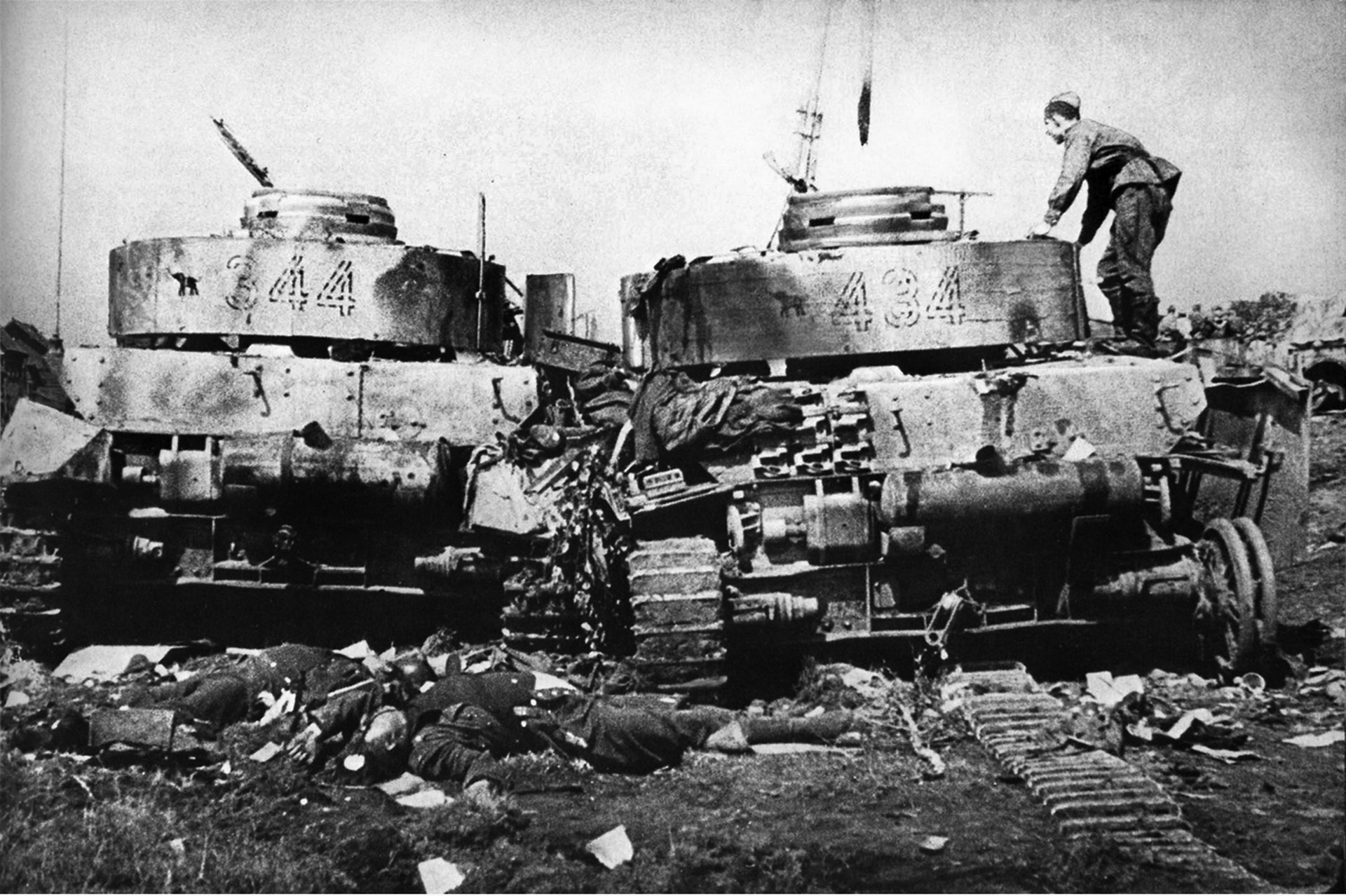
After Kursk, with the initiative in the hands of the Red Army, deception became a key element in strategic planning. Operational deception improved in frequency and quality. Centralization of deception planning was established for all headquarters, with orders to prepare deception plans for every operation. Stavka determined the objectives of deception for multi-front operations, overseeing its planning and conduct. At army-level and below, commanders bore responsibility for carrying out their portion of operational deception plans and for developing similar plans within their subordinate units.
Red Army commanders shifted from random use of misinformation to a complex set of measures performed according to a carefully prepared set of plans; however, most of these measures were employed only during the period leading up to an offensive—they had not yet learned how to carry out deception during the execution of operations.
While German intelligence could still track and detect Russian units at the tactical level with accuracy, information on Russian rear-area operations and movements of large formations was not as good. The failure to locate these formations often prevented rapid German responses to imminent threats.
In 1943, while the Russians were able to conceal their operational intentions on numerous occasions, the Germans were still able to determine where their strategic priorities lay.
During 1944, the ability of the Russians to conduct strategic deception and misdirection continued to mature. That winter, Russian operations conditioned the Germans into expecting a drive through the Ukraine into Poland and Rumania. In the spring, the Red Army implemented an elaborate strategic deception plan to conceal a redeployment of forces and preparations for an attack into Belorussia—Operation Bagration.
The Russian deception effort intended to convince the Germans that the blow would fall on Army Group North Ukraine. On the eve of the offensive, German intelligence identified 140 to 168 Russian divisions but only three tank corps opposite Army Group Center, when in fact there were eight tank and mechanized corps.
Operation Bagration applied deception on a grand scale. The key to the operation was to reinforce the German belief that the Red Army main effort would continue along a southern axis of advance. The Soviets planned to pin German reserves south of the Pripyat Marshes until the fighting along the center of the front had been decided.
The Germans greatly miscalculated the threat to Army Group Center. As a result, the German High Command redeployed a third of its artillery, half its tank destroyers, and 88 percent of its tanks from Army Group Center. The Germans had been forced to rely on limited intelligence gathered from radio intercepts and aerial reconnaissance.
Hitler’s reckless optimism and determination to hold on to territory at all costs encouraged him to believe the picture suggested by the Russians. His advisors believed the Soviets were running out of men and materiel. Local German forces had determined the locations and approximate timing of Operation Bagration, but the high command failed to appreciate how strong the offensive would be, or its intentions.
The success of the offensive against Army Group Center exceeded Russian expectations. As German reserves moved to stabilize the situation, the 1st Ukrainian Front struck Army Group Northern Ukraine in coordination with the 1st Belorussian Front. As both Fronts reached the Vistula River, Russian forces struck in the Baltic States and in Rumania.
Russian successes were made possible by improved capabilities to shift large numbers of reserves secretly across the front and into forward areas. Operational-deception planning was more comprehensive and efficient in 1944 than it had been in 1943. During 1943, the Russians had occasionally moved armies secretly from one sector to another, but by 1944 such practices had become fairly common.
Increasingly limited maneuver space across a narrowing front altered Russian deception efforts in 1945. During the previous year, with the front extending from the North Cape to the Black Sea, the huge frontage offering the Russians opportunities to exploit deception in a variety of locales and circumstances. By December 1944, as the front ran from just the Baltic Sea to the Danube River, Russian opportunities to conceal their intentions diminished dramatically.
The success of deception operations in 1944 was, in part, also a product of deteriorating German intelligence capabilities. In August 1944, the German intelligence service for the Russian Front, Foreign Armies East, noted that human intelligence, signals intelligence, and air reconnaissance had decreased markedly. They attributed the intelligence decline to the Russians’ increased use of radio silence, fast-moving operations that quickly decreased the value of intelligence from human sources, and a decrease in air-reconnaissance capability. As defeat followed defeat, German apprehension contributed to the intelligence confusion, the Germans treating every attack indicator with increased seriousness. This further conditioned them to make ‘knee-jerk’ reactions to Red Army misdirection and deception.
Since the Red Army possessed superior numbers and the Germans perceived that their opposition was overwhelming, the Russians could make feints and offensive prepa-rations in multiple areas to produce continual apprehension on the part of the Germans. The inability of German intelligence to differentiate between various threats generated multiple false predictions and an inability to determine precisely where and when a Russian offensive would occur.
As the war progressed the Russians found it virtually impossible to completely conceal an intended attack. But experience showed that it was not necessary to mask intent. Successful concealment of the scale, scope, location, or timing of an attack produced satisfactory results. There was, in fact, an advantage in not deceiving the enemy regarding one’s overall intent, as an expectant enemy tended to have an active imagination. Thus, German intelligence was more receptive to false indicators, particularly when intelligence collection was unable to discriminate or was inept. A partially warned enemy was more easily deceived.
Timing of an offensive was the most difficult element to mask, but it was determined that timing need not be masked perfectly to achieve its desired end. The enemy only need be deceived to the point that it was impossible for him to make necessary redeployments to thwart the attack. If deception worked regarding scale and location, even a small timing miscalculation by the enemy could spell disaster, especially for a force struck in the midst of redeploying. The Russians became satisfied if they were able to deceive the Germans regarding the timing of an attack by just a few days.
One of the weaknesses of Russian deception planning was a lack of knowledge about what the Germans knew concerning Russian deception techniques. While routine methods would probably achieve success against a new and unsuspecting enemy, they could spell disaster when used against an experienced foe. The Russians learned this on numerous occasions early in the war when rigid practices yielded predictable patterns, which the Germans then capitalized on.
Attempts at reconnaissance deception designed to deceive the Germans as to the location of a main attack actually tipped them off to where the attack would occur. The use of radio silence was also recognized as an indicator of a pending offensive. From 1943 on, Russian directives urged commanders to use imaginative, innovative, and flexible techniques — unusual for what was considered such an inflexible organization as the Red Army.
It was vitally important that deception and misdirection measures capitalize on enemy perceptions, self-delusions, or misconceptions. This required subtlety in high-level planning and innovation along with skill in low-level implementation, making it possible to catch the Germans off balance. But the Russians proved they could learn and adapt, perfecting their techniques to a fine art. These became keys to their survival, and eventually their ability to win.
Author Allyn Vannoy has written extensively on a variety of topics related to World War II. He resides in Hillsboro, Oregon.
